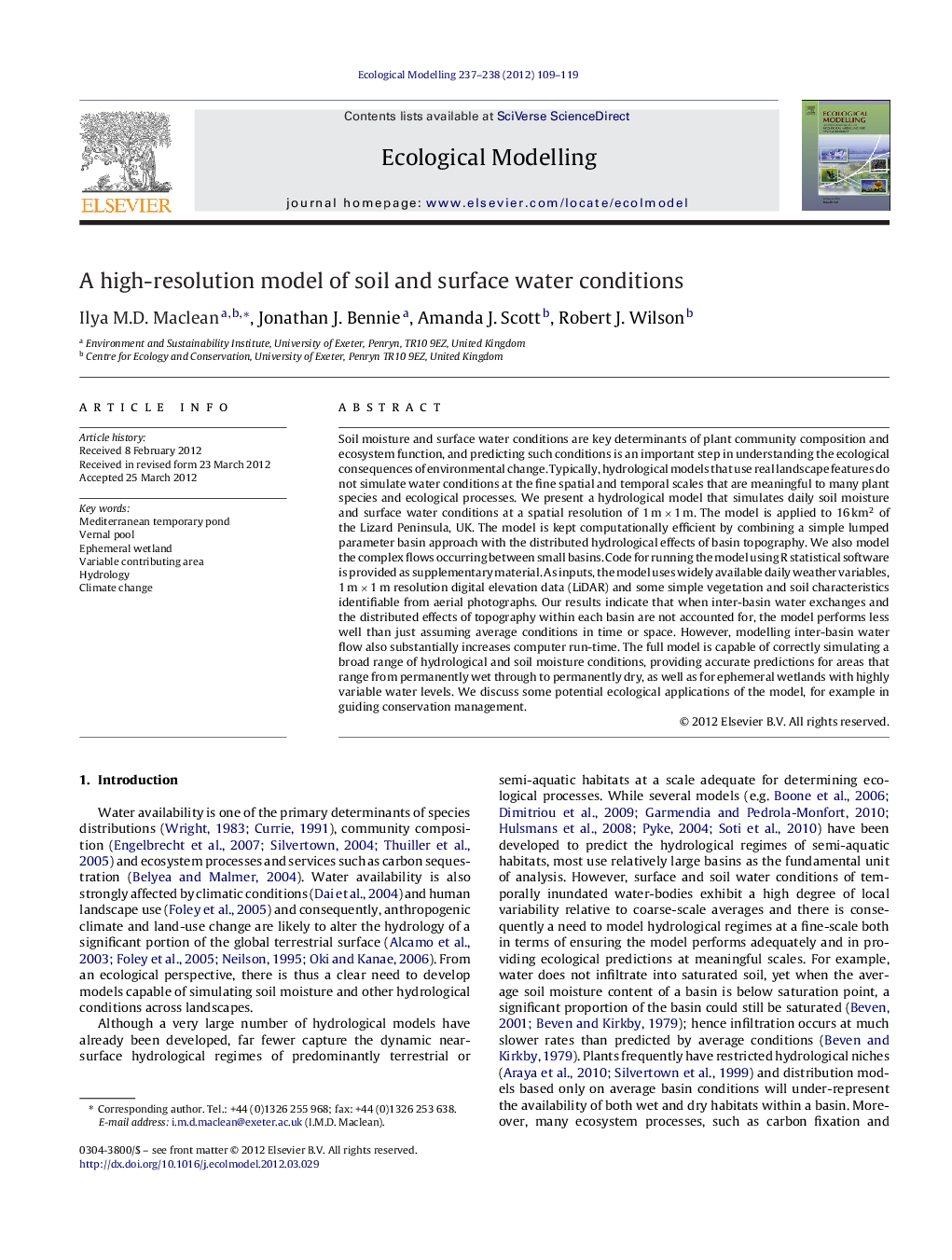| Article ID | Journal | Published Year | Pages | File Type |
|---|---|---|---|---|
| 4376468 | Ecological Modelling | 2012 | 11 Pages |
Soil moisture and surface water conditions are key determinants of plant community composition and ecosystem function, and predicting such conditions is an important step in understanding the ecological consequences of environmental change. Typically, hydrological models that use real landscape features do not simulate water conditions at the fine spatial and temporal scales that are meaningful to many plant species and ecological processes. We present a hydrological model that simulates daily soil moisture and surface water conditions at a spatial resolution of 1 m × 1 m. The model is applied to 16 km2 of the Lizard Peninsula, UK. The model is kept computationally efficient by combining a simple lumped parameter basin approach with the distributed hydrological effects of basin topography. We also model the complex flows occurring between small basins. Code for running the model using R statistical software is provided as supplementary material. As inputs, the model uses widely available daily weather variables, 1 m × 1 m resolution digital elevation data (LiDAR) and some simple vegetation and soil characteristics identifiable from aerial photographs. Our results indicate that when inter-basin water exchanges and the distributed effects of topography within each basin are not accounted for, the model performs less well than just assuming average conditions in time or space. However, modelling inter-basin water flow also substantially increases computer run-time. The full model is capable of correctly simulating a broad range of hydrological and soil moisture conditions, providing accurate predictions for areas that range from permanently wet through to permanently dry, as well as for ephemeral wetlands with highly variable water levels. We discuss some potential ecological applications of the model, for example in guiding conservation management.
► We modelled daily hydrological conditions across 16 km2 at a resolution of 1 m2. ► The model uses remotely derived data as inputs. ► The model accounts for the distributed effects of basin topography. ► We explicitly account for inter-basin water exchange. ► The model correctly simulates a broad range of hydrological conditions.
